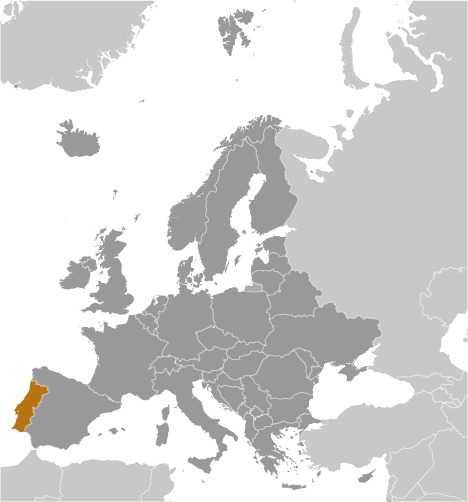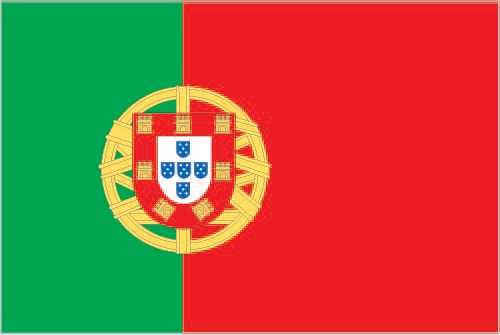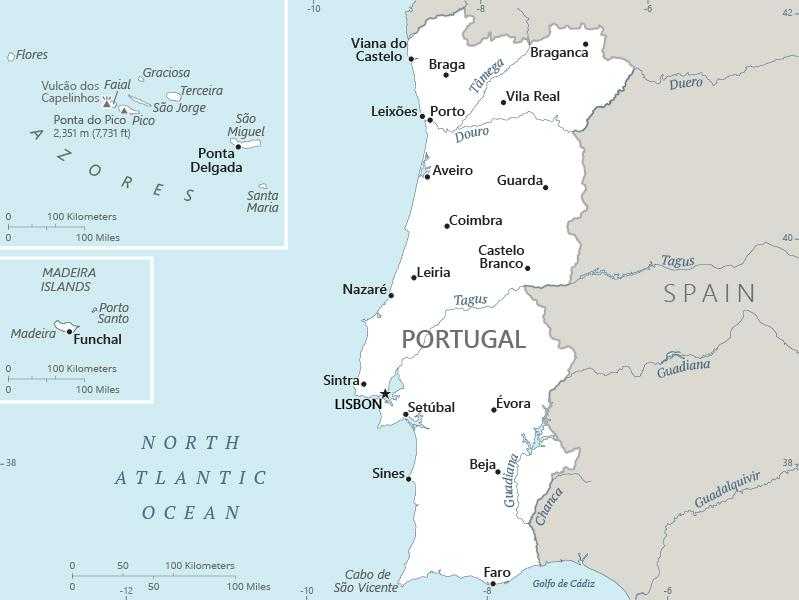Introduction
Background
A global maritime power during the 15th and 16th centuries, Portugal lost much of its wealth and status with the destruction of Lisbon in a 1755 earthquake, occupation during the Napoleonic Wars, and the independence of Brazil, its wealthiest colony, in 1822. Portugal is a founding member of NATO and entered the EC (now the EU) in 1986.
Geography
Area
total : 92,090 sq km
land: 91,470 sq km
water: 620 sq km
Climate
maritime temperate; cool and rainy in north, warmer and drier in south
Natural resources
fish, forests (cork), iron ore, copper, zinc, tin, tungsten, silver, gold, uranium, marble, clay, gypsum, salt, arable land, hydropower
People and Society
Population
total: 10,207,177
Ethnic groups
Portuguese 95%; citizens from Portugal’s former colonies in Africa, Asia (Han Chinese), and South America (Brazilian) and other foreign born 5%
Languages
Portuguese (official), Mirandese (official, but locally used)
Religions
Roman Catholic 79.7%, Protestant 2.2%, other Christian 2.5%, other non-Christian, 1.1%, none 14.5% (2021 est.)
Population growth rate
-0.14% (2024 est.)
Government
Government type
semi-presidential republic
Capital
name: Lisbon
Executive branch
chief of state: President Marcelo REBELO DE SOUSA (since 9 March 2016)
head of government: Prime Minister Antonio Luis MONTENEGRO (since 2 April 2024)
Legislative branch
description: unicameral Assembly of the Republic or Assembleia da Republica (230 seats; 226 members directly elected in multi-seat constituencies by closed-list proportional representation vote and 4 members - 2 each in 2 constituencies representing Portuguese living abroad - directly elected by proportional representation vote; members serve 4-year terms)
Economy
Economic overview
high-income EU and eurozone economy; strong services sector led by tourism and banking; tight labor market; private consumption and export recovery driving post-inflation rebound; EU Recovery and Resilience Plan (RRP) funds a key driver of public investment; high public debt but improving fiscal position
Real GDP (purchasing power parity)
$439.008 billion (2023 est.)
$429.3 billion (2022 est.)
$401.863 billion (2021 est.)
Real GDP per capita
$41,700 (2023 est.)
$41,200 (2022 est.)
$38,800 (2021 est.)
Agricultural products
milk, tomatoes, grapes, olives, maize, oranges, pork, potatoes, chicken, apples (2022)
Industries
textiles, clothing, footwear, wood and cork, paper and pulp, chemicals, fuels and lubricants, automobiles and auto parts, base metals, minerals, porcelain and ceramics, glassware, technology, telecommunications; dairy products, wine, other foodstuffs; ship construction and refurbishment; tourism, plastics, financial services, optics
Exports
$136.589 billion (2023 est.)
$126.541 billion (2022 est.)
$105.648 billion (2021 est.)
Exports - partners
Spain 25%, France 12%, Germany 11%, US 7%, UK 5% (2022)
Exports - commodities
cars, garments, refined petroleum, vehicle parts/accessories, plastic products (2022)
Imports
$133.006 billion (2023 est.)
$131.627 billion (2022 est.)
$112.413 billion (2021 est.)
Imports - partners
Spain 31%, Germany 11%, France 6%, China 5%, Italy 5% (2022)
Imports - commodities
crude petroleum, cars, refined petroleum, natural gas, vehicle parts/accessories (2022)
Exchange rates
euros (EUR) per US dollar -
Page last updated: Wednesday, July 24, 2024




